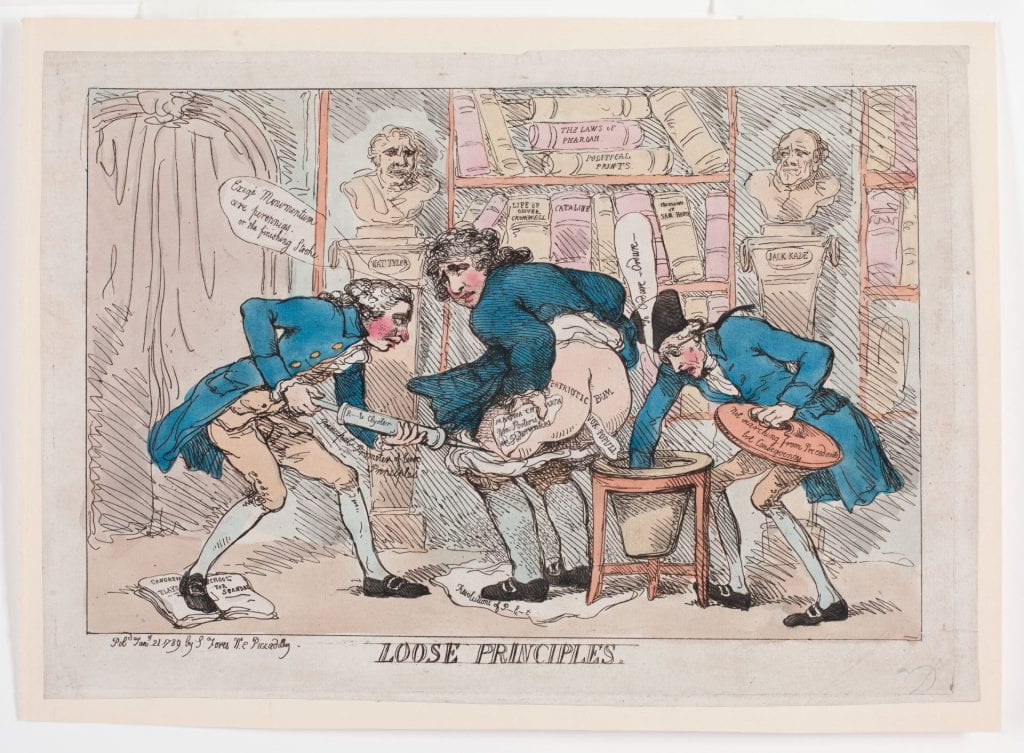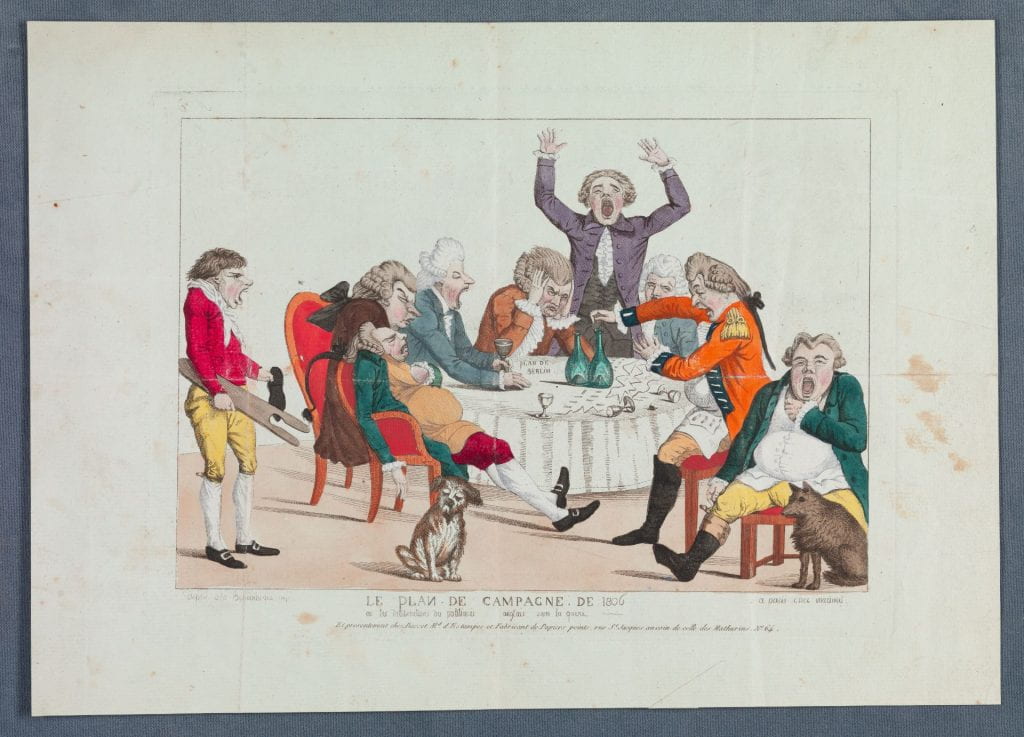“By the efforts of Pitt, who directs Addington, and of a jester wearing cap and bells, an earthenware jug representing George III is lowered into the sea and fatally damaged by striking a rock inscribed ‘Malte’. ‘Addington’ is a man of straw (his body formed of a bundle of straw), a puppet attached to a pole placarded with his name; Pitt (left) pulls threads attached to the dangling arms and legs, but looks round horrified at the disaster resulting from his machinations. The jester crouches on a rock (right); under his foot is a document: ‘Traité d’Amiens’ [see British Musueum Satires No. 9852, &c.]; he holds in both hands the rope, lowering the royal pitcher, but the other end of the rope is round Addington’s hand and thus is manipulated by Pitt. Malta is a small castellated island with a church and a sharp rock which has gashed the pitcher just where it is decorated with a dog-like lion from whose head a crown falls. The mouth of the pitcher is a profile portrait of George III crowned, and looking down with angry dismay at the fatal rock.”–British Museum online catalogue.
- Title:Tant va la cruche à l’eau qu’enfin elle se brise [graphic].
- Publication:A Paris : Chez Martinet, Rue du Coq, Saint Honoré, [ca. May 1803]
803.05.00.01+
Acquired May 2020






